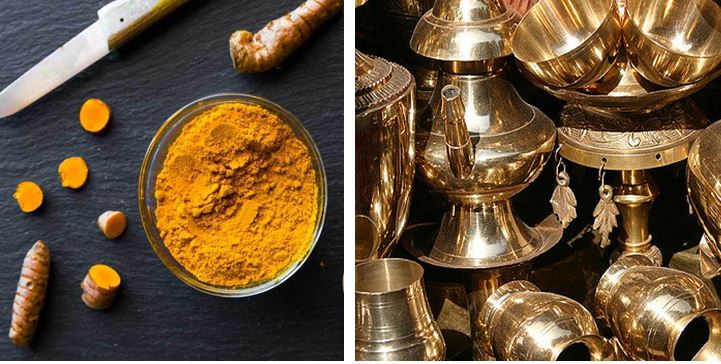The West is turning to India in order to prevent being victimized by what seems to be an unsparing strain of the dreaded Coronavirus – COVID-19. Globally, over 8010 deaths have been reported, and over 202,241 cases have been reported till the filing of this report. COVID-19 is believed to have originated from Wuhan, in China, where many believe the unhealthy edible practices of some have cost the world over eight thousand lives, and counting.
Indian civilization has been one which has its fundamentals deeply rooted in science, medicine and what modern civilizations dearly lacked – common sense. The land of Ayurveda today is the only hope for the world to survive this pandemic, and there is sufficient evidence to suggest that the world is indeed adopting practices inherent to Bharat. Now while millennials and the youth have occupied themselves with making fun of ancient Indian wisdom and what can be home-remedies for an enhanced immune system, countries like the UK and Germany are desperately looking for Indian spices to help them fight Coronavirus.
The export of turmeric has risen by a whopping 300% for one export agency alone, and the main consumers happen to be countries in Europe. This, despite the onset of summer, which usually witnesses a dip in the demand of raw turmeric.
“The overall jump in export demand for fruits and vegetables has increased by 15%. But we have seen the demand for raw turmeric jump by 300%,” Kaushal Khakhar, chief executive officer at Kay Bee Exports told the Economic Times. Notably, sales of fruits and vegetables have also seen a minimal of 10% rise, while the poultry market continues to dip. The export of raw turmeric has risen most for countries fighting Coronavirus in the West.
Turmeric is a part and parcel of Indian life. It is used in every household in the country, and has been so since times immemorial. No meal is complete without turmeric in India. Moreover, how turmeric mixed with milk does wonders in killing pain and healing injuries is really something one does not need to describe. Known for its anti-inflammatory, anti-septic and anti-biotic properties, turmeric plays an important role in making the immune system of individuals stronger. It is for this very reason that ‘turmeric capsules’ are now being widely commercialized and brought into use.
Initial studies have shown that individuals with weaker immune systems are more susceptible to contract the COVID-19 Coronavirus, and that the strain can also prove fatal for people who have weak respiratory systems such as the case with smokers or the elderly. For those with a strong immune system, the chances of being cured are much more.
Perhaps this is the primary reason why the demand of immunity-boosters like raw turmeric has seen such a humongous rise in the west. Many would have discovered by now that their immune systems are weak, and in a bid to enhance the same in a short span of time, turmeric seems to be their best bet.
‘Giloy’, an ayurvedic herb can also work wonders in the prevention of Coronavirus. Known to cure fever and flu in a matter of days, Giloy kaadha is widely consumed in India for the treatment of viral cold and cough, not to mention fever too. Giloy, also known as the ‘root of immortality’ enhances the immune system like no other medication. It also is found helpful in the treatment of diabetes and gastrointestinal disorders.
Copper and Brass have been an essential part of Indian civilization. An article in ‘The Fast Company’ probingly asks as to why copper is not widely used as the most common surface material in the world. Another article the Vogue presents the benefits of using brass utensils. Brass and copper utensils were perhaps the only materials to be used as utensils in India. The practice of drinking water from brass utensils is inherent to all Indians, of course, that we have forgotten the same is another aspect. Meanwhile, it has been proven that virus strains degenerate when brought in contact with Copper surfaces. While the Coronavirus can survive for days at length on normal surfaces, it cannot do so on copper.
“We’ve seen viruses just blow apart,” says Bill Keevil, professor of environmental healthcare at the University of Southampton. “They land on copper and it just degrades them.” Vessels made of ‘Tamba’ and ‘Peetal’ have been in use for millennia in the Indian civilization for a reason. Copper is a potent antimicrobial material.
Also Read: What is Giloy and what are the benefits of it’s Juice?
The practice of cremation of bodies is being accepted like no other Indian practice has been. China’s National Health Commission had ordered that all those who had succumbed to Coronavirus need to be cremated immediately. The process of burial was discarded as the COVID-19 strain would pollute the soil, however, upon cremation, it would not be able to survive the soaring temperatures. In the West too, many are turning to cremation of dead bodies, as the process of burial also poses a real-estate issue, and just how much land the dead would end up occupying.
Finally, Namaste is being adopted by almost everyone around the world. Again, this is a practise born in India, where the event of physically touching someone is meant to be very intimate and not all-pervasive. The act of physical contact, according to Indian tradition meant performing ‘runanubandha’, which was the accumulation of memories by physical contact, something which should be avoided.
While Indian civilization has been mocked for the longest time, for the world to now accept it as the most scientific and beneficial one is indeed a validation of age-old practices inherent to this dharmic land. We can only hope that using Indian techniques, the world can brave the disastrous effects of Coronavirus.
